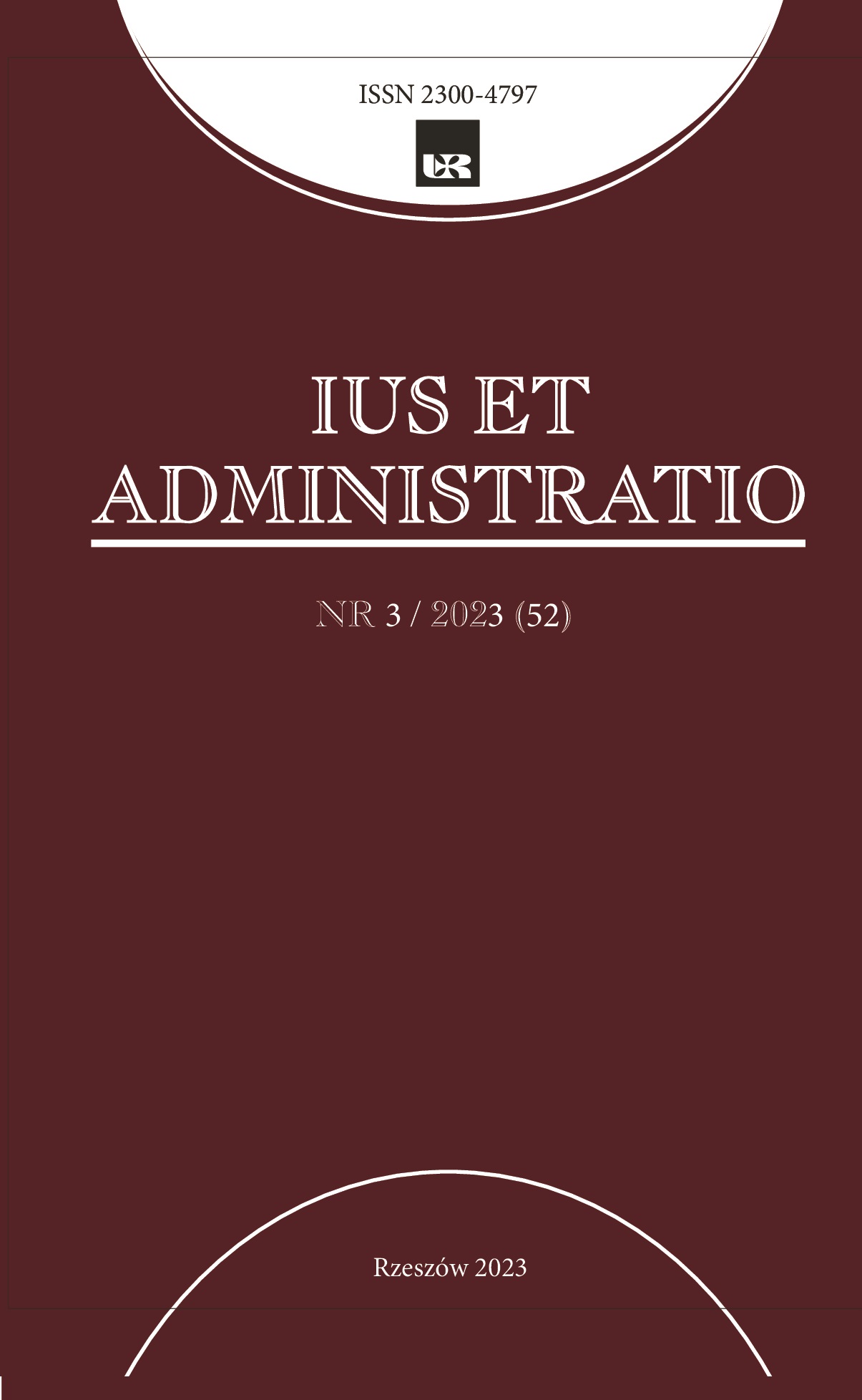Characteristics of the phenomenon of child pornography
DOI:
https://doi.org/10.15584/iuseta.2023.3.15Keywords:
child pornography, pedophilia, sexual exploitation, typology of perpetratorsAbstract
The phenomenon of child pornography is becoming an increasingly significant issue. The advancement of information technology and the widespread accessibility of the Internet have significantly contributed to the escalation of production, distribution, and consequently, consumption of child pornography. Currently, factors such as anonymity, access to mass media, social communication platforms, ease of establishing contacts, and broad avenues for distributing pornographic materials have turned the Internet into an attractive environment for sexual offenders. International organizations collaborating with numerous countries make daily efforts to combat these crimes on a global scale through the exchange of information, pursuit of perpetrators, and protection of potential victims. Furthermore, through their initiatives, they catalyze the creation of various programs and campaigns aimed at raising awareness among children, parents, and educational professionals about the threats associated with pedophilia and child pornography. All actions, whether on legislative, operational, or educational levels, are geared towards safeguarding children. The objective of this article is to present the factors underlying the phenomenon of child pornography. The subject matter also addresses the issue related to the interpretation of the legal term ‘possession’ in relation to digital child pornography. Additionally, the author highlights differences within the typology of perpetrators and characterizes organizations aimed at combating the sexual exploitation of children.
Downloads
References
Burgess A.W., Hartman C.R., Child Abuse Aspects of Child Pornography, „Psychiatric Annals” 1987, vol. 17, no. 4.
Filkenhor D., Childhood Victimization. Violence, Crime, and Abuse in the Lives of Young People, Oxford 2008.
Grabowska A., Uwodzenie, Cyberprzemoc oraz pornografia – wiktymizacja dziecka w wirtualnym świecie, „Forum Oświatowe” 2010, nr 1(42).
Koba L., Prostytucja i pornografia dziecięca [w:] Organizacje międzynarodowe w działaniu, red. A. Florczak, A. Lisowska, Wrocław 2014.
Krawulska-Ptaszyńska A., Smelkowska-Zdziabek A., Pornografia dziecięca – charakterystyka zjawiska, „Ruch Prawniczy, Ekonomiczny i Socjologiczny” 1997, z. 3.
Mądrzejowski W., Prawne podstawy współdziałania służb i instytucji zwalczających przestępczość zorganizowaną w Polsce, „Kultura Bezpieczeństwa. Nauka – Praktyka – Refleksje” 2018, nr 29.
Mileniczuk A., Międzynarodowa Organizacja Policji Kryminalnej Interpol – metody i instrumenty funkcjonowania, „Facta Simonidis” 2017, nr 10.
Report of the Consultation on Child Abuse Prevention, World Health Organisation (WHO), Geneva 29–31 March 1999.
Safjański T., Działania Interpolu – charakter prawny, systematyka oraz próba oceny skuteczności, „Przegląd Bezpieczeństwa Wewnętrznego” 2020, t. XII, nr 23.
Świerczewska-Gąsiorowska A., Wykorzystanie seksualne małoletnich, a medyczne pojęcie pedofilii, „Przegląd Policyjny” 2017, nr 1(125).
Wojtasik Ł., Sprawcy wykorzystania seksualnego dzieci przy użyciu Internetu, https://dzieckokrzywdzone.fdds.pl /index.php/DK/article/viewFile/166/127 [dostęp: 22.07.2023].
Wrześniewski M., Krytycznie o przestępstwach pornograficznych, „Prokuratura i Prawo” 2011, nr 11.
Żarnowska-Grabarz P., Pornografia w sztuce, a odpowiedzialność karna artystów – uwagi na tle art. 202 k.k., „Palestra” 2017, nr 7–8.
Coraz więcej dziecięcej pornografii w internecie, https://www.rp.pl/kraj/art3748261-raport-dyzur-net-pl-coraz-wiecej-dzieciecej-pornografii-w-internecie [dostęp: 15.04.2023].
Historia i socjologia pornografii, http://informatorects.uw.edu.pl/pl/courses/view?prz_kod=3502-FAKL17 [dostęp: 14.02.2023].
https://ecpat.org/about-us/ [dostęp: 14.04.2023].
https://pl.wikipedia.org/wiki/Interpol [dostęp: 14.04.2023].
https://www.interpol.int/ [dostęp: 14.04.2023].
Prewencja kryminalna – pedofilia, https://leszno.policja.gov.pl/w13/prewencja /prewencja-kryminalna/69797,Pedofilia.html [dostęp: 13.03.2023].
Downloads
Published
How to Cite
Issue
Section
License
Copyright (c) 2023 Ius et Administratio

This work is licensed under a Creative Commons Attribution-NonCommercial-NoDerivatives 4.0 International License.

